
Bayanzurkh District: The Cultural Heartbeat of Ulaanbaatar
Discover Bayanzurkh District in Ulaanbaatar: A vibrant blend of historical landmarks, cultural sites, local markets, and stunning natural beauty.
Bayanzurkh District, nestled in the eastern part of Ulaanbaatar, is a vibrant and culturally rich area that offers a unique blend of modernity and tradition. It is one of the largest districts in Ulaanbaatar and serves as a gateway to the scenic beauty of the countryside, making it a perfect starting point for tourists exploring Mongolia. The district boasts several historical landmarks and cultural sites, such as the Zaisan Memorial, which honors soldiers from World War II with sweeping views of the city and surrounding landscapes. Another notable attraction is the Gandan Monastery, one of Mongolia's most significant Buddhist temples, where visitors can witness traditional rituals and soak in the serene atmosphere. Bayanzurkh is also a hub for shopping and dining, offering a plethora of markets, boutiques, and eateries. The Naran Tuul Market, often referred to as the Black Market, is a must-visit for those looking to experience local life and shop for traditional Mongolian crafts, clothing, and souvenirs. Culinary enthusiasts can indulge in a variety of local and international cuisines, with many restaurants serving delectable Mongolian dishes such as buuz (steamed dumplings) and khuushuur (fried meat pies). For nature lovers, the district provides easy access to the Bogd Khan Mountain, a UNESCO World Heritage site, perfect for hiking and exploring Mongolia's stunning natural landscapes. The Tuul River, flowing through the district, offers picturesque views and opportunities for leisurely strolls along its banks. Bayanzurkh District beautifully encapsulates the spirit of Ulaanbaatar, offering a harmonious blend of history, culture, and natural beauty. Whether you're an adventure seeker or a culture enthusiast, this district has something to offer everyone.
Local tips in Bayanzurkh District
- Visit early in the morning to avoid crowds at major attractions like the Zaisan Memorial and Gandan Monastery.
- Wear comfortable shoes as exploring the markets and hiking the Bogd Khan Mountain involves a lot of walking.
- Carry cash, especially when visiting local markets like Naran Tuul, as many vendors do not accept credit cards.
- Try local dishes such as buuz and khuushuur at neighborhood eateries for an authentic Mongolian culinary experience.
- Be aware of pickpockets at crowded places like markets and tourist spots. Keep your belongings secure.
Bayanzurkh District: The Cultural Heartbeat of Ulaanbaatar
Bayanzurkh District, nestled in the eastern part of Ulaanbaatar, is a vibrant and culturally rich area that offers a unique blend of modernity and tradition. It is one of the largest districts in Ulaanbaatar and serves as a gateway to the scenic beauty of the countryside, making it a perfect starting point for tourists exploring Mongolia. The district boasts several historical landmarks and cultural sites, such as the Zaisan Memorial, which honors soldiers from World War II with sweeping views of the city and surrounding landscapes. Another notable attraction is the Gandan Monastery, one of Mongolia's most significant Buddhist temples, where visitors can witness traditional rituals and soak in the serene atmosphere. Bayanzurkh is also a hub for shopping and dining, offering a plethora of markets, boutiques, and eateries. The Naran Tuul Market, often referred to as the Black Market, is a must-visit for those looking to experience local life and shop for traditional Mongolian crafts, clothing, and souvenirs. Culinary enthusiasts can indulge in a variety of local and international cuisines, with many restaurants serving delectable Mongolian dishes such as buuz (steamed dumplings) and khuushuur (fried meat pies). For nature lovers, the district provides easy access to the Bogd Khan Mountain, a UNESCO World Heritage site, perfect for hiking and exploring Mongolia's stunning natural landscapes. The Tuul River, flowing through the district, offers picturesque views and opportunities for leisurely strolls along its banks. Bayanzurkh District beautifully encapsulates the spirit of Ulaanbaatar, offering a harmonious blend of history, culture, and natural beauty. Whether you're an adventure seeker or a culture enthusiast, this district has something to offer everyone.
Iconic landmarks you can’t miss
Zaisan Monument
Experience the rich history and breathtaking views at Zaisan Monument, a key landmark in Ulaanbaatar, Mongolia.

Bogd Khaan Palace Museum
Explore the Bogd Khaan Palace Museum, a historical gem in Ulaanbaatar, showcasing Mongolia's royal heritage and captivating artifacts.

The Fine Arts Zanabazar Museum
Discover the Fine Arts Zanabazar Museum, a treasure trove of Buddhist art and Mongolian culture in Ulaanbaatar, perfect for art lovers and cultural explorers.

Dashchoilin Monastery
Explore the serene beauty and spiritual depth of Dashchoilin Monastery, a must-visit Buddhist temple in the heart of Ulaanbaatar, Mongolia.

SDG Wall
Explore the SDG Wall in Ulaanbaatar, a vibrant historical landmark showcasing Mongolia's commitment to sustainable development through local artistry.

Soyombo and national hymn monument
Explore the Soyombo and National Hymn Monument in Ulaanbaatar, a stunning tribute to Mongolia's rich cultural heritage and national pride.

Аав нартаа
Explore Aav Nartaa, a historical landmark in Ulaanbaatar that reveals the rich heritage of Mongolia through its stunning architecture and captivating stories.

Алтай хаан угалз
Explore the breathtaking landscapes and rich cultural heritage of Altai Khan Ugalz, a top tourist attraction in Ulaanbaatar, Mongolia.
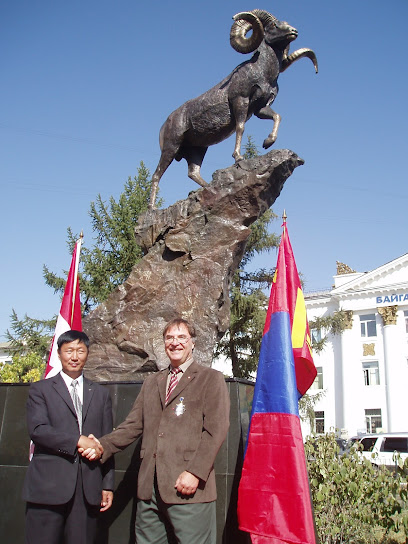
Yampai / Guardian door /
Explore the Yampai Guardian Door, a captivating tourist attraction in Ulaanbaatar, showcasing Mongolia's rich cultural heritage and history.

Girl with a lamb Sculpture
Discover Ulaanbaatar's heartfelt artistry at the Girl with a Lamb Sculpture, a captivating symbol of nature and humanity intertwined in Mongolia's vibrant capital.

Unmissable attractions to see
Gandantegchinlen Monastery
Discover the serene beauty of Gandantegchinlen Monastery in Ulaanbaatar, a vibrant Buddhist temple steeped in history and tranquility.

National Amusement Park
Discover endless fun at Ulaanbaatar's National Amusement Park, where laughter and excitement await for visitors of all ages.

Zaisan Monument
Discover the Zaisan Monument, a historical tribute offering breathtaking views and rich cultural insights in Ulaanbaatar, Mongolia.

Choijin Lama Temple Museum
Explore the Choijin Lama Temple Museum in Ulaanbaatar, a serene haven of Tibetan Buddhism and Mongolian culture, featuring stunning architecture and rich artifacts.
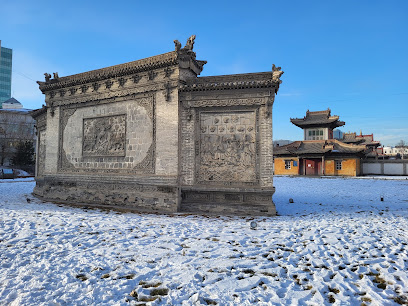
The Fine Arts Zanabazar Museum
Unearth the profound artistic legacy of Mongolia at the Fine Arts Zanabazar Museum, filled with stunning Buddhist art and cultural artifacts.

The Zero Point of the Ulaanbaatar City
Explore The Zero Point of Ulaanbaatar, the heart of Mongolia's capital, where history meets modernity in a vibrant urban landscape.

Camel Caravan Statue
Immerse yourself in Mongolia's nomadic heritage at the iconic Camel Caravan Statue, a symbol of ancient trade routes in Ulaanbaatar.

Алтай хаан угалз
Explore the breathtaking landscapes and rich cultural heritage at Altai Khan Ugalz, a top tourist attraction near Ulaanbaatar, Mongolia.

Happy City statue
Discover the vibrant Happy City Statue in Ulaanbaatar, a joyful representation of happiness and a perfect backdrop for your travel memories.

Essential places to dine
Veranda
Experience Ulaanbaatar's vibrant culinary scene at Veranda - where traditional Mongolian cuisine meets modern elegance.

Choijin Temple Restaurant
Experience exquisite Mediterranean cuisine at Choijin Temple Restaurant in Ulaanbaatar - where every meal tells a story.

Black Burger Factory
Experience gourmet burgers in Ulaanbaatar's vibrant setting at Black Burger Factory - where flavor meets creativity.
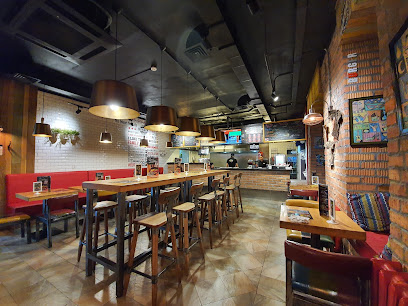
Gobi Cave Turkish Restaurant
Experience authentic Turkish cuisine at Gobi Cave Restaurant in Ulaanbaatar - a delightful blend of tradition and flavor awaits!

Terrazza Restaurant
Experience exquisite dining with stunning city views at Terrazza Restaurant in Ulaanbaatar.

Le Bistrot Francais
Experience authentic French cuisine at Le Bistrot Francais in Ulaanbaatar - where every dish tells a story.

Il Fiore Italian Restaurant
Discover authentic Italian flavors at Il Fiore Restaurant in Ulaanbaatar - where tradition meets taste for an unforgettable dining experience.

Baikal GastroBar
Savor authentic Russian flavors at Baikal GastroBar in Ulaanbaatar - where tradition meets modern dining.

Silkroad restaurant
Experience the essence of Mongolian cuisine at Silkroad Restaurant - a culinary gem in Ulaanbaatar offering diverse flavors and warm hospitality.

Romance Restaurant
Experience Ulaanbaatar's finest dining at Romance Restaurant, where exquisite flavors meet enchanting ambiance for an unforgettable culinary journey.

Markets, malls and hidden boutiques
Ulaanbaatar Department Store
Explore the Ulaanbaatar Department Store: a modern shopping destination blending local and international styles in Mongolia's vibrant capital.

Mary & Martha Mongolia
Explore the charm of Mongolia at Mary & Martha Mongolia, a fair trade store offering unique handicrafts and authentic souvenirs in Ulaanbaatar.

Tsagaan Alt Wool Shop
Discover the finest Mongolian wool products at Tsagaan Alt Wool Shop in Ulaanbaatar, where tradition meets style and quality.

SOUVENIR SHOP
Discover unique souvenirs that reflect Mongolia's vibrant culture at this charming gift shop in Ulaanbaatar.

wOOw unusual gift shop
Explore wOOw Unusual Gift Shop in Ulaanbaatar for unique, handcrafted treasures that celebrate Mongolian culture and artistry.

Үсэн бөмбөг. Furball
Uncover unique and authentic Mongolian gifts at Үсэн бөмбөг (Furball) Gift Shop in Ulaanbaatar, a treasure trove of cultural souvenirs.

NOMAD HOUSE - Souvenir Shop
Explore NOMAD HOUSE in Ulaanbaatar for authentic Mongolian souvenirs, unique gifts, and a cultural experience like no other.

Uruhan Brand | Урухан брэнд
Explore a unique gift shop in Ulaanbaatar offering handcrafted Mongolian treasures that capture the essence of local artistry and culture.

Grand Boutique Shop
Explore the Grand Boutique Shop in Ulaanbaatar for a blend of local and international fashion, offering a unique shopping experience in Mongolia.

Unique Print Shop, Narma Brand
Explore the unique fashion offerings at Narma Brand Print Shop in Ulaanbaatar, where tradition meets modern style in every piece.

Essential bars & hidden hideouts
SALM PUB & BAR
Discover the heart of Ulaanbaatar's nightlife at SALM PUB & BAR, where local culture meets vibrant socialization in a welcoming atmosphere.

LIMANI Lounge - Ulaanbaatar
LIMANI Lounge in Ulaanbaatar: A stylish rooftop escape with breathtaking views, exquisite cocktails, and a vibrant atmosphere for relaxation.

Elixir Coffee & Wine Bar
Discover Elixir Coffee & Wine Bar in Ulaanbaatar, where cozy ambiance meets a curated selection of gourmet coffee and fine wines.

Tse Pub
Experience the heart of Ulaanbaatar's nightlife at Tse Pub, where great drinks and vibrant atmosphere await every visitor.

Biere House Ulaanbaatar
Explore the lively Biere House Ulaanbaatar for an unforgettable night filled with live music, local culture, and a wide variety of drinks.

Bacco Mongolia
Experience the vibrant nightlife of Ulaanbaatar at Bacco Mongolia, where handcrafted cocktails and stylish ambiance come together.

Num Sum Speakeasy Bar
Experience the vibrant nightlife of Ulaanbaatar at Num Sum Speakeasy Bar, where expertly crafted cocktails and a cozy ambiance await you.

Owl Cafe and Bar
Experience the whimsical charm of Owl Cafe and Bar in Ulaanbaatar, where delightful drinks and a cozy atmosphere await every visitor.
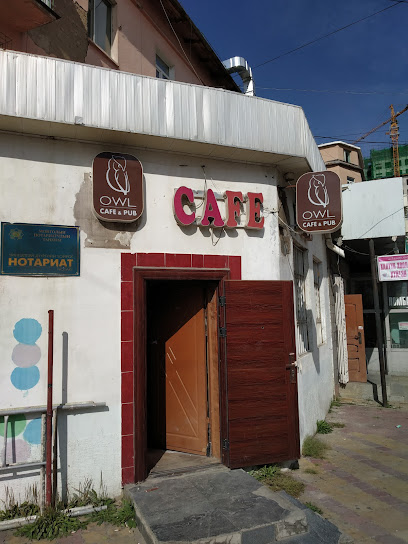
Barcode game pub
Discover the lively Barcode Game Pub in Ulaanbaatar, where gaming meets nightlife for an unforgettable social experience.
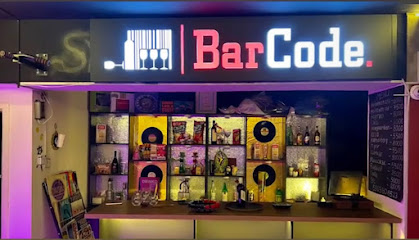
Hardy’s wine bar
Discover Hardy’s Wine Bar in Ulaanbaatar for a delightful fusion of local wines and a vibrant social atmosphere, perfect for tourists and locals alike.

Local Phrases
-
- HelloСайн уу
[Sain uu] - GoodbyeБаяртай
[Bayartai] - YesТийм
[Tiim] - NoҮгүй
[Ugui] - Please/You're welcomeТа баярлалаа
[Ta bayarlalaa] - Thank youБаярлалаа
[Bayarlalaa] - Excuse me/SorryУучлаарай
[Uuchlaarai] - How are you?Та яаж байна уу?
[Ta yaaj baina uu?] - Fine. And you?Сайн байна. Чи?
[Sain baina. Chi?] - Do you speak English?Та англи хэл дараахгүй уу?
[Ta angli khel daraakhgui uu?] - I don't understandБи ойлгож чадаагүй
[Bi oilgozh chadaagui]
- HelloСайн уу
-
- I'd like to see the menu, pleaseМенюг харахыг хүсч байна
[Menyug kharakhig khüsch baina] - I don't eat meatБи мах хоолоо амьдараагүй
[Bi makh khooloo amdaraagui] - Cheers!Тү, тү
[Tü, tü] - I would like to pay, pleaseТөлбөрөө хийх болно
[Tölböröö khikh bolno]
- I'd like to see the menu, pleaseМенюг харахыг хүсч байна
-
- Help!Тусламж!
[Tuslamzh!] - Go away!Зайлаа!
[Zailaa!] - Call the Police!Полицыг дуудаа!
[Politssig duudaa!] - Call a doctor!Эмнэлгээ дуудаа!
[Emnelgee duudaa!] - I'm lostБи алдах байна
[Bi aldakh baina] - I'm illБи эмчилгээгүй
[Bi emchilgeeui]
- Help!Тусламж!
-
- I'd like to buy...Би ... авахыг хүсч байна
[Bi ... avakhig khüsch baina] - I'm just lookingБи зөвхөн харахыг хүсч байна
[Bi zövkhhön kharakhig khüsch baina] - How much is it?Энэ хэд вэ?
[Ene khed ve?] - That's too expensiveЭнэ харандаа их байна
[Ene kharandaa ikh baina] - Can you lower the price?Үнийг хасах боломжтой уу?
[Üniig khasakh bolomzhtoi uu?]
- I'd like to buy...Би ... авахыг хүсч байна
-
- What time is it?Одоо хэдэн цаг байна?
[Odoo kheden tsag baina?] - It's one o'clockНэг цаг байна
[Neg tsag baina] - Half past (10)Арван хойно
[Arvan khoino] - MorningӨглөө
[Öglöö] - AfternoonОрой
[Oroj] - EveningОройн цаг
[Oroin tsag] - YesterdayӨчигдөр
[Öchigdör] - TodayӨнөөдөр
[Önöödör] - TomorrowМаргааш
[Margaaash] - 1Нэг
[Neg] - 2Хоёр
[Khöör] - 3Гурав
[Gurav] - 4Дөрөв
[Döröv] - 5Тав
[Tav] - 6Зурга
[Zurga] - 7Долоо
[Doloo] - 8Найм
[Naim] - 9Ес
[Es] - 10Арван
[Arvan]
- What time is it?Одоо хэдэн цаг байна?
-
- Where's a/the...?... хаана байна?
[... khaana baina?] - What's the address?Хаяг хэн байна?
[Khayag khön baina?] - Can you show me (on the map)?Зурган дээр харуулах боломжтой уу?
[Zurgan deer kharuulakh bolomzhtoi uu?] - When's the next (bus)?Дараагийн (автобус) хэн байна?
[Daraagiin (avtobus) khön baina?] - A ticket (to ....)Тасалгаа (... рүү)
[Tasalgaa (... rüü)]
- Where's a/the...?... хаана байна?
History of Bayanzurkh District
-
Bayanzurkh District, like much of Mongolia, is deeply rooted in nomadic culture and tradition. The area has been inhabited by pastoral communities for centuries, reflecting the lifestyle of the Mongolian nomads who relied on herding and seasonal migrations. Evidence of ancient burial mounds and artifacts in the district points to a long-standing connection to the land and its resources.
-
During the 17th and 18th centuries, the Qing Dynasty exerted influence over Mongolia. Bayanzurkh, being part of the Ulaanbaatar region, witnessed the establishment of trade routes that facilitated the exchange of goods and culture between the Mongolian plateau and neighboring regions. This period marked a significant interaction among various ethnic groups, including Mongols, Chinese, and Russians.
-
In the mid-20th century, particularly during the 1950s and 1960s, Bayanzurkh District underwent significant urban development as part of Mongolia's socialist planning efforts. The government prioritized housing and infrastructure projects to accommodate the growing urban population of Ulaanbaatar. This led to the establishment of residential blocks and communal facilities, which shaped the district's modern landscape.
-
Since the 1990s, following Mongolia's transition to a market economy, Bayanzurkh has experienced rapid urbanization. The district has become a hub for new businesses, educational institutions, and residential complexes. The influx of people from rural areas seeking opportunities has transformed Bayanzurkh into a vibrant community, reflecting the dynamic changes within Ulaanbaatar as a whole.
-
Bayanzurkh District is characterized by its cultural diversity, with various ethnic groups coexisting within its neighborhoods. The district hosts traditional festivals and events that celebrate Mongolian heritage, including Naadam and Tsagaan Sar. Local markets and community centers serve as focal points for cultural exchange, showcasing the rich traditions of both urban and nomadic lifestyles.
Bayanzurkh District Essentials
-
Bayanzurkh District is located approximately 10 kilometers southeast of Ulaanbaatar's city center. To reach Bayanzurkh, you can take a taxi or a ride-hailing service, which is convenient and relatively inexpensive. Buses also operate from various parts of the city; look for buses with numbers 10, 26, and 29, which connect to this district.
-
Bayanzurkh District is primarily accessible by bus and taxi. Local buses run frequently and are an affordable option. Bicycles can be rented from various locations in the city, but be cautious of traffic and road conditions. Walking is feasible in certain areas, especially near local markets and parks. However, public transport is the most common way to navigate the district.
-
Bayanzurkh District is generally safe for tourists, but it is advisable to remain vigilant. Areas around the bus stations can be crowded, so keep personal belongings secure. Avoid poorly lit streets at night and stay cautious in less populated areas. While there are no specific high-crime zones targeting tourists, it’s always best to be aware of your surroundings.
-
In case of an emergency, dial 102 for police, 103 for an ambulance, and 105 for fire services. Ulaanbaatar has several hospitals and clinics, with some located in or near Bayanzurkh. It's advisable to have travel insurance that covers medical emergencies. For minor health issues, local pharmacies can provide over-the-counter medications.
-
Fashion: Do dress modestly, especially in religious or rural areas. Avoid overly casual attire. Religion: Do respect local customs; when visiting temples or monasteries, dress conservatively and follow any specific rules. Public Transport: Do give up your seat for the elderly and pregnant women. Don’t engage in loud conversations. Greetings: Do greet locals with a nod or handshake. Eating & Drinking: Do try local dishes and accept food offers. Don’t waste food, as it’s considered disrespectful.
-
To experience Bayanzurkh like a local, visit the bustling Bayanzurkh Market, where you can find fresh produce, clothing, and handmade goods. Engage in conversations with vendors; they often have fascinating stories about their products. For a unique experience, join a local family for a traditional meal, which is a common practice in Mongolia. Additionally, explore the nearby parks for a taste of local leisure activities.
Nearby Cities to Bayanzurkh District
-
Things To Do in Zuunmod
-
Things To Do in Semey
-
Things To Do in Incheon
-
Things To Do in Seoul
-
Things To Do in Suwon
-
Things To Do in Chuncheon
-
Things To Do in Daejeon
-
Things To Do in Jeonju
-
Things To Do in Gwangju
-
Things To Do in Mokpo
-
Things To Do in Andong
-
Things To Do in Pavlodar
-
Things To Do in Suncheon
-
Things To Do in Daegu
-
Things To Do in Pohang











